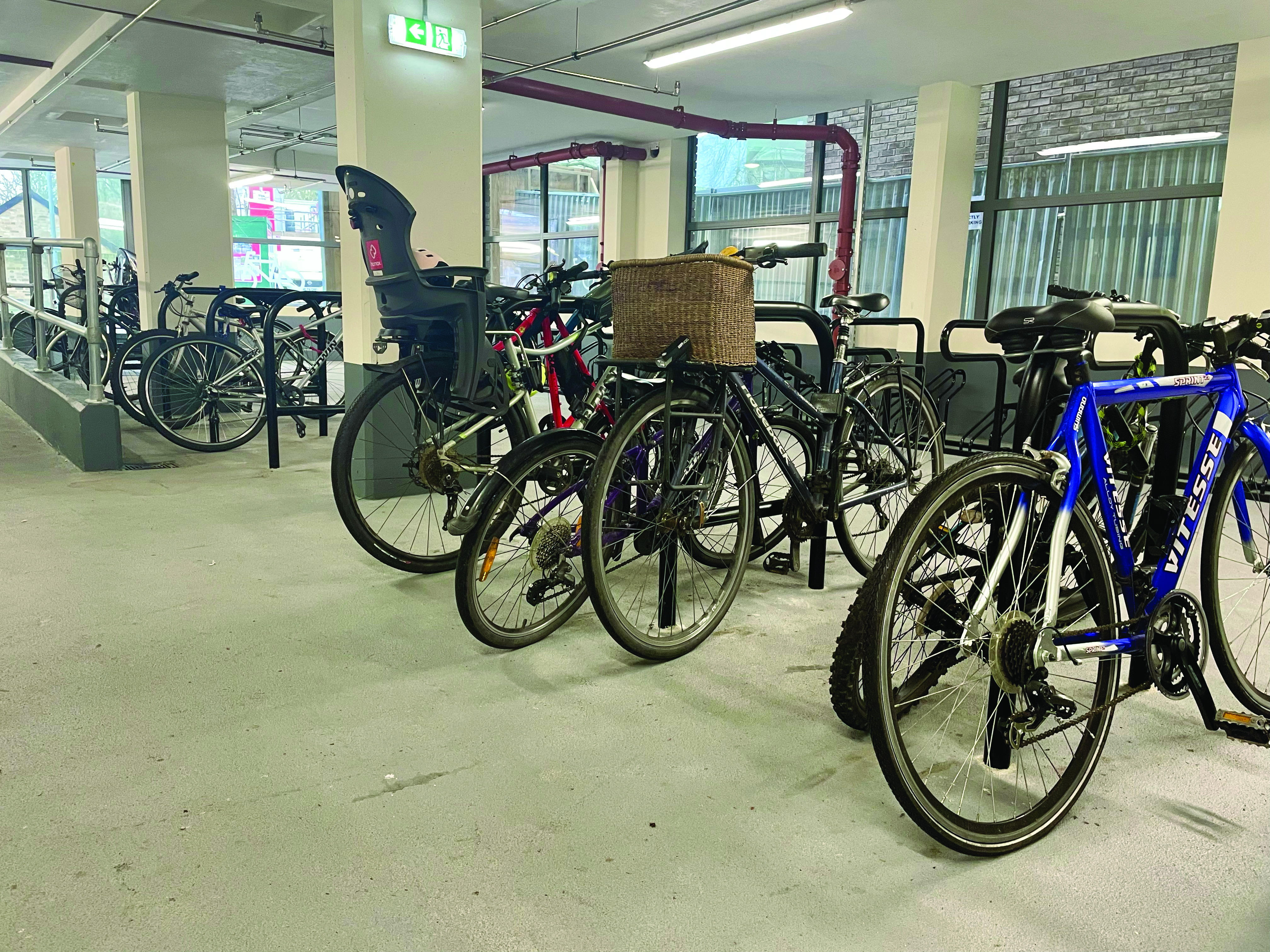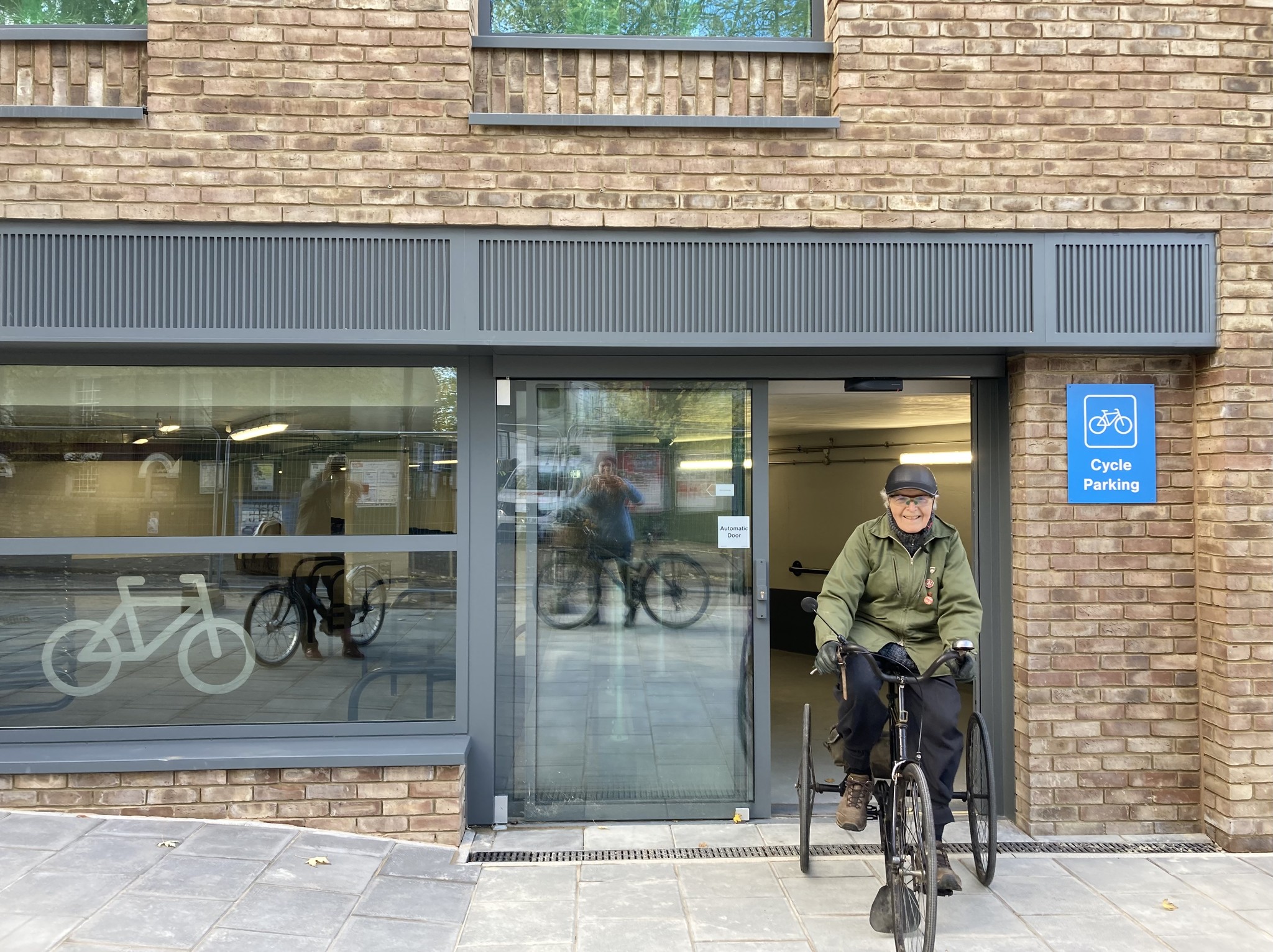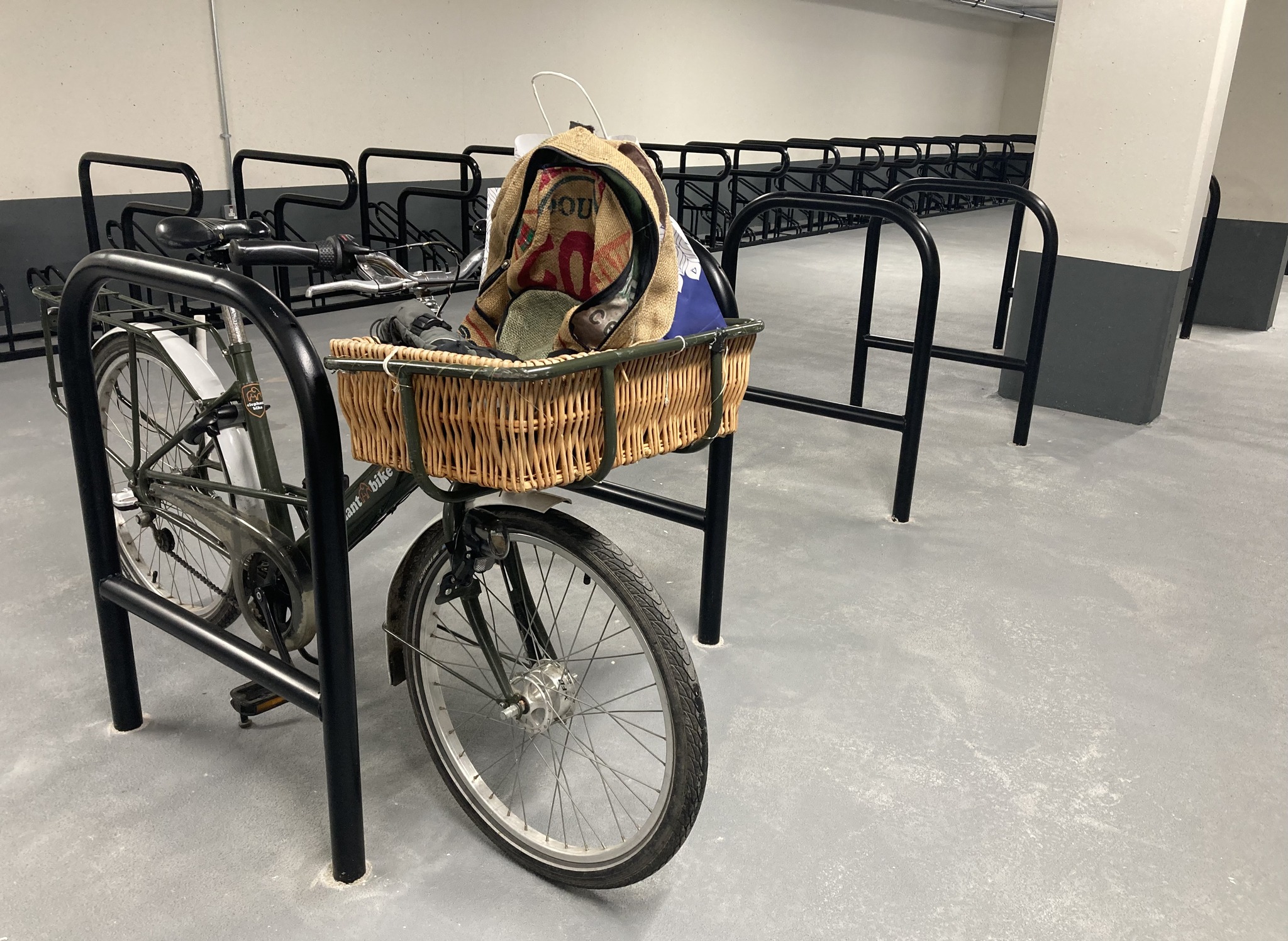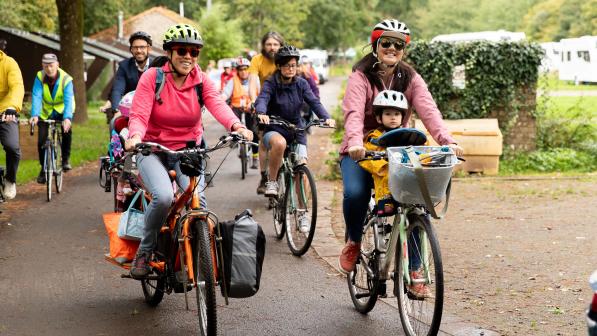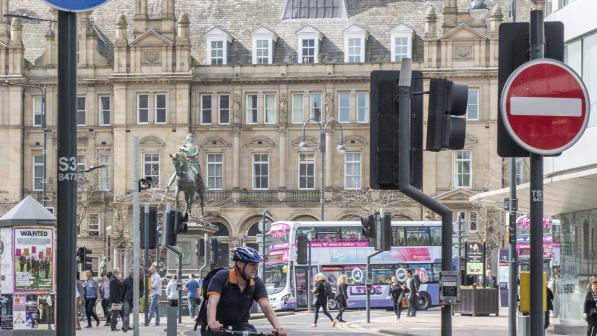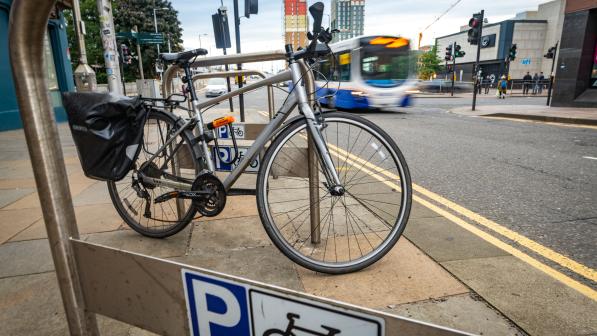The problem with cycle parking
Everyone reading this probably has a story about how they’ve cycled to a local shop, café, GP surgery or similar only to find nowhere to safely leave their bike, having to hunt around for a tree or lamppost to lock it to – often to the disapproving looks of drivers who have handily been given plenty of parking spaces.
Or maybe you’ve cycled somewhere you’ve been assured has secure cycle parking, only to find it’s too tall or too chunky to fit a lock to. Or it’s clearly been designed with aesthetics in mind rather than practical use.
A lack of secure, usable cycle parking is a major barrier to cycling – no one wants to risk leaving their bike somewhere only to find it no longer there when they return.
Can I leave my bike?
In the past I’ve emailed pubs prior to cycling there to make sure there’ll be somewhere to leave my bike. Responses include ‘You can wheel it through the pub to our garden’ and ‘There are some stands in one corner of the car park’.
The first response worries me. What if the people working on the day I visit take offence to me bringing a bike through their pub? The second feels like par for the course: cyclists are an afterthought.

I’ve also recced shopping centres and the like by public transport before cycling there to check out the cycle parking provision. But that only works if you’ve got the time and funds to do it. Parents can’t load up the kids onto a bus just so they can be sure next time they’ll be able to ride there – and they shouldn’t have to.
I can’t imagine anyone driving has ever had to do either of these things. And they certainly have never had to look for a handy tree!
Cycling is a cheap, quick and efficient way to get around. It’s also good for our mental and physical wellbeing and the environment. Encouraging more cycling should be a no brainer. But do that, people need to know that there is somewhere safe and secure where they can leave their bikes while they go shopping or visit the doctor; and that simply isn’t the case right now.
I much prefer cycling as a means of getting around to the alternatives. Living in a city means it’s faster and cheaper than other options, like public transport or driving. It’s much quicker than walking and I can go further and carry more.
But when I’m going somewhere new there are times when it just feels like too much hassle – because what do I do if I get there and simply can’t find anywhere secure to leave my bike?
Getting it right: Cambridge’s Park Street cycle parking has plenty of space for cycles, including non-standard ones. Photos: Camcycle
Inadequate provision
Too often, whatever cycle parking is provided is totally inadequate. The stands are too flimsy or not properly attached to the ground. Or they’re the ones that you can only lock the front wheel in, risking coming back to nothing but that wheel.
It’s usually an afterthought, shoved round the back or on a side street, where there’s little lighting and hardly any people about. Not only does that make any bikes left there easier to steal, but it’s completely unsafe for women to use.
One person not on the bus means more space for others; one car off the road means less traffic for everyone else. Yet we’re thwarted in this by something that would be so simple to fix: a lack of cycle parking.
Research by Knight Frank in 2020 found that 22,000 hectares of UK land is car park. That doesn’t even include on-street parking or driveways. Knight Frank is a real estate consultancy so it talks about how many houses could be built on this space.
But imagine if instead a portion of it was given over to bike parking. You can get 12 standard cycles in one car parking space. We wouldn’t need all of it – this isn’t a cars versus bikes thing.

Dedicating just a small proportion of those car parks to cycles would make a huge difference. Say, half of the ground floor of a multi-storey or a quarter of other car parks handed over to cycle parking.
What’s possible
This would be safe, secure, covered, well lit and would represent good use of current facilities. It’s certainly not impossible. Park Street car park in Cambridge has secure parking for 239 standard bicycles and 10 oversized cycles. The council worked with local cycle campaign group Camcycle on the design.
It’s not perfect – our Cycle Advocacy Network representative in Ely has informed me that is something of a target for thieves. As she points out, as with so much else, context is all important when it comes to designing good cycle parking.
What’s great about the Park Street development is that there’s space for non-standard cycles too – cargo bikes for those transporting kids or goods, trikes for those who need a bit of extra balance.
Because however bad it is for those of us on standard bikes, it’s much, much worse for anyone who uses a non-standard cycle. Even where rows of Sheffield stands are provided, they’re usually too close together to accommodate anything but a standard two-wheeler.
Lack of cycle parking disproportionately affects lower-income groups too, limiting their ability to travel. People who can’t afford to run a car often can afford a bike. Decent cycle parking would offer greater opportunity to get out and about, giving better access to job opportunities, green space and physical activity.

Which leads me to my final point. Safe storage at home is also essential to increase cycle use, and those who live in flats or high rises often simply don’t have space. If they’re lucky they might have a balcony where they can lock up a bike, but even that isn’t secure.
A friend of mine had two bikes stolen from his second-floor balcony. He’s given up buying bikes. Other people end up locking their bikes to lampposts and simply hoping they’ll be there in the morning – or losing their main means of transport.
It would be inconceivable to plan a housing development without on-street parking, often in addition to garages and driveways. But it’s the norm to not even consider cycles. In some areas, on-street bike hangers are now available, but it costs to rent a space in these, whereas in many towns and cities on-street parking is free.
What we can do
It might feel like there’s nothing we can do about this. But organisations like Cycling UK advocate for better provision for cyclists in new developments, while there are things that we as individuals can do.
First, try talking to shop and café owners and managers. Much of the time they simply haven’t considered that people want to cycle. If you let them know that you and others do, then they can do something about it. A few Sheffield stands in a well-lit area won’t cost that much and it’s financially beneficial to them to provide what their customers want.
Second, get in touch with your local council to ask them to ensure that safe cycle parking is included in any new developments. If you want to find out more about cycle campaigning in your local area, take a look at our Cycle Advocacy Network.
